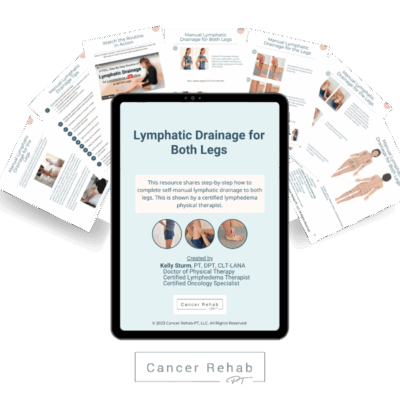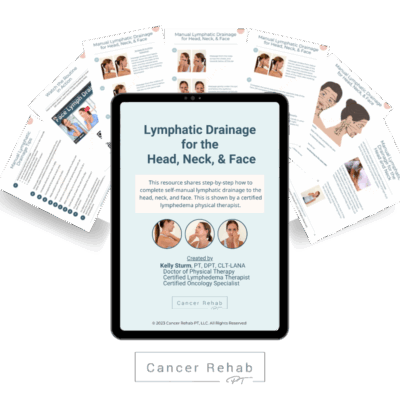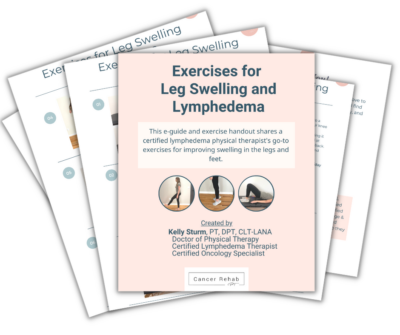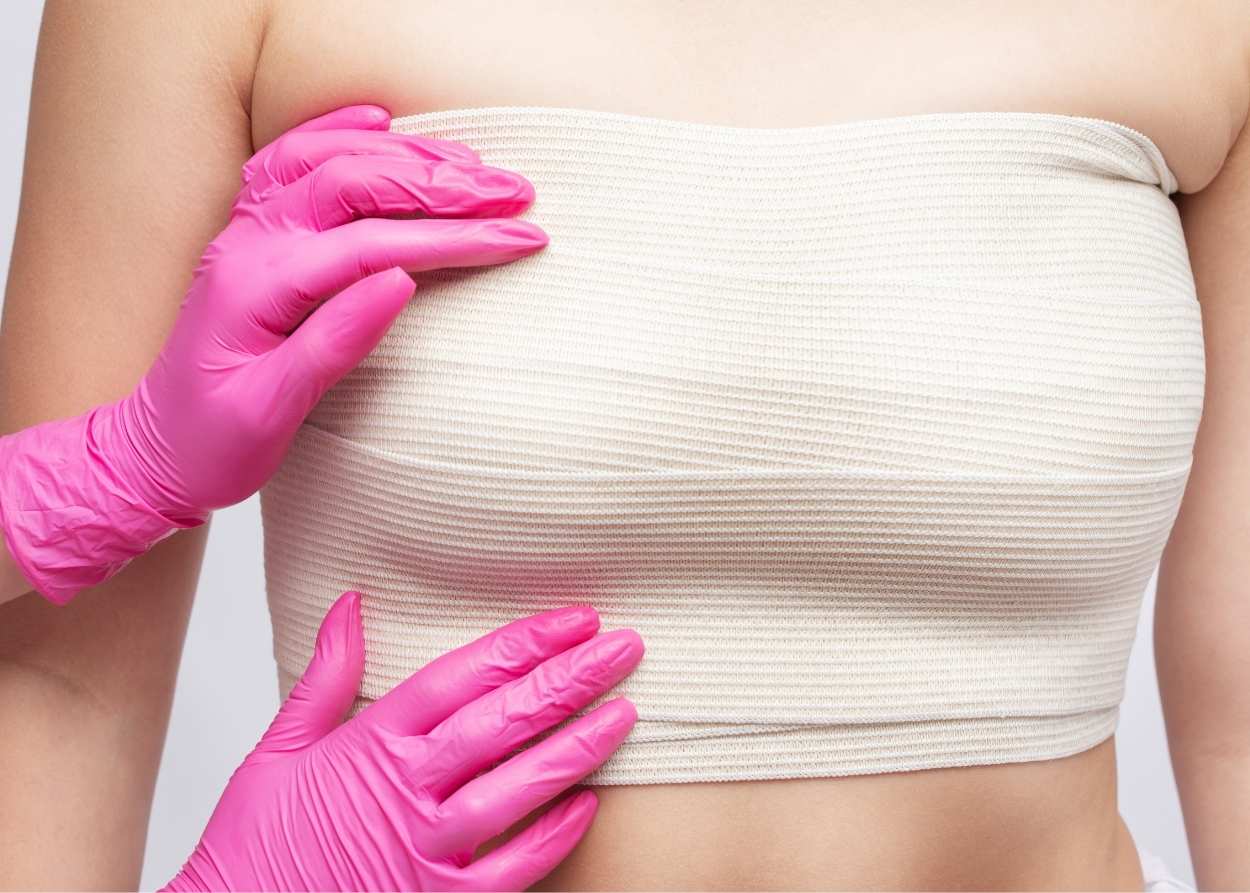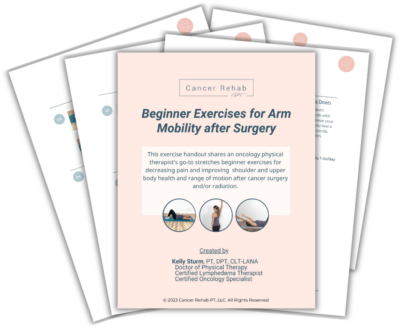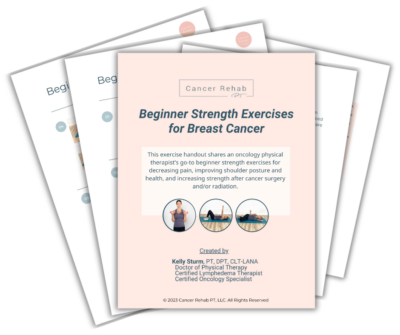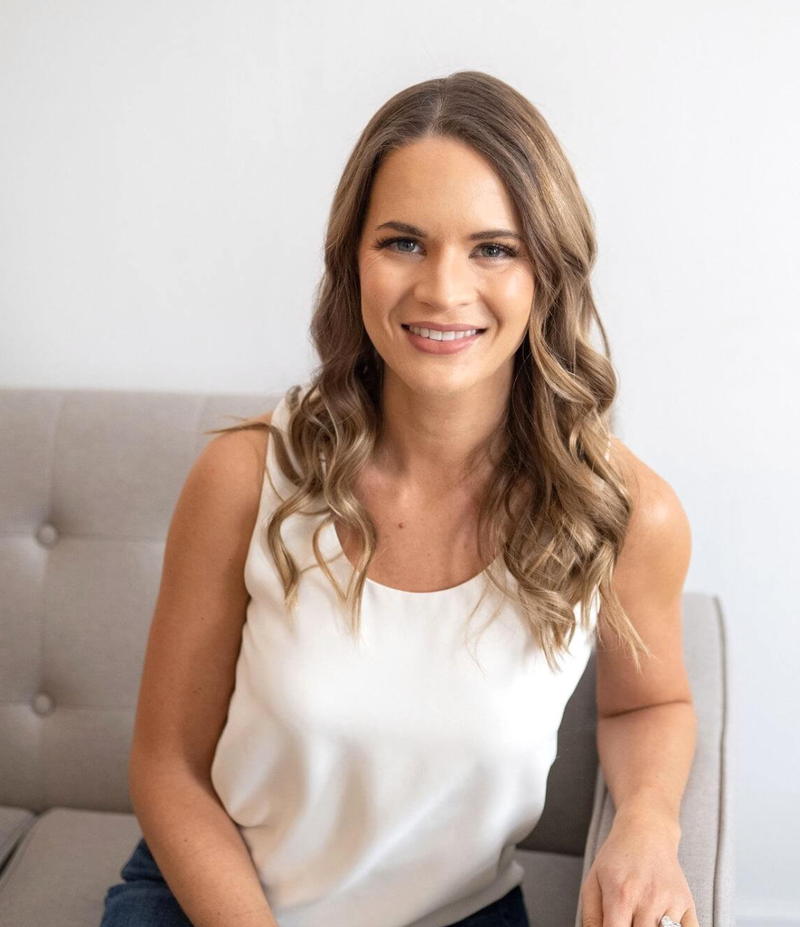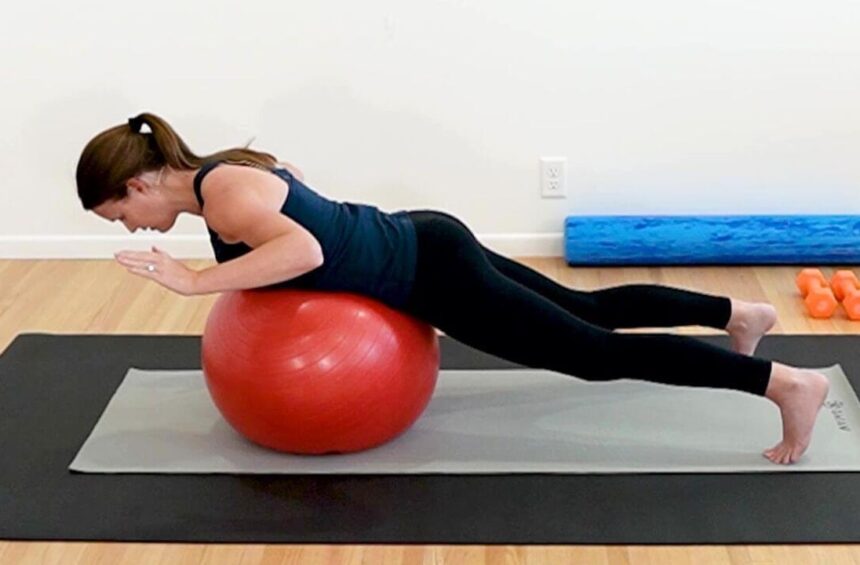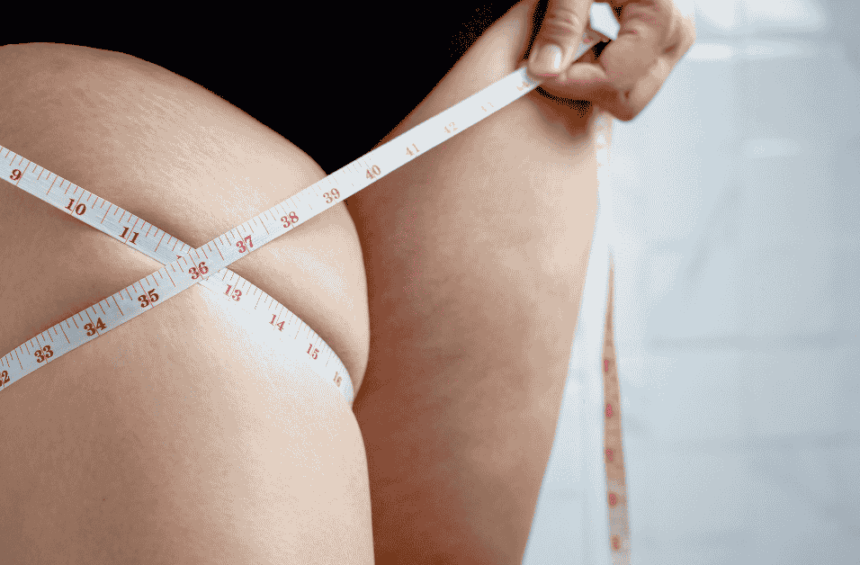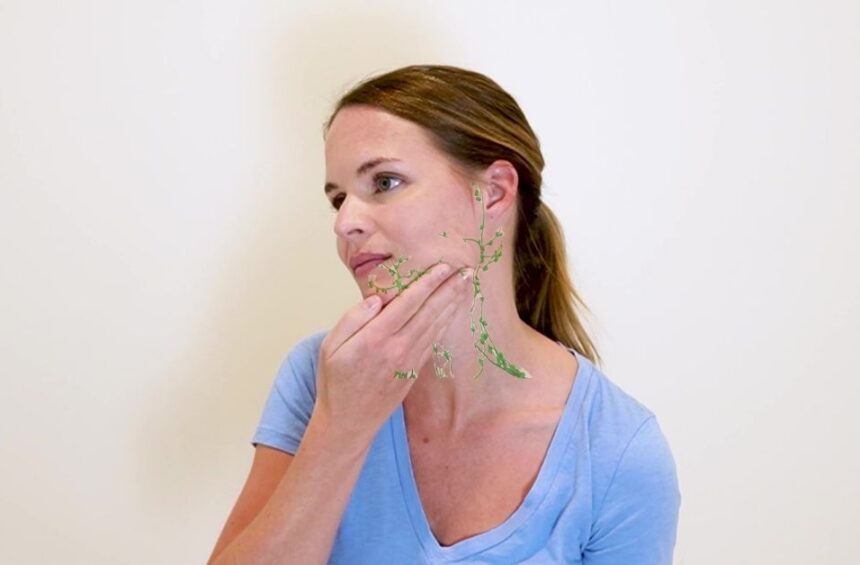A prophylactic mastectomy is a surgical procedure that removes healthy breast tissue to prevent breast cancer from developing. Also known as a preventative mastectomy, this surgery is performed on women who have a high risk of developing breast cancer but haven’t been diagnosed with the disease.
The decision to have a prophylactic mastectomy isn’t easy, since it’s a major surgery that results in a big change to your body. However, it can significantly reduce cancer risk for the right candidates.
What Is a Prophylactic Mastectomy?
A prophylactic mastectomy removes one or both healthy breasts before cancer develops. This preventive surgery is different from a therapeutic lumpectomy or mastectomy, which removes breast tissue after a cancer diagnosis.
Bilateral mastectomy reduces breast cancer risk by at least 95% in women with harmful variants in the BRCA1 or BRCA2 genes, and up to 90% in women with a strong family history of breast cancer.
A prophylactic mastectomy greatly lowers your risk of developing breast cancer in the future, but it’s not 100% effective. Your surgeon won’t be able to remove all breast tissue that can extend to the collarbone and armpit, so there’s unfortunately still a small risk.
Can I Get a Preventative Mastectomy?
Generally speaking, you may choose to get a prophylactic mastectomy if you’re at a high risk for breast cancer. This includes:
- BRCA1 or BRCA2 gene mutations: These genetic variants dramatically increase breast cancer risk. Women with these mutations have up to a 72% lifetime risk of developing breast cancer.
- Strong family history: Multiple close relatives with breast or ovarian cancer, especially before the age of 50. This includes mothers, sisters, daughters, or grandmothers.
- Previous high-risk breast conditions: Conditions like lobular carcinoma in situ (LCIS) or atypical ductal hyperplasia. These aren’t cancer, but they increase your future invasive breast cancer risk.
- Previous chest radiation: Radiation therapy to the chest area before age 30 increases your risk of breast cancer in the future.
- Personal history of breast cancer: If you’ve had cancer in one breast, you may choose to remove the other healthy breast to reduce your risk of future cancer.
You must also be healthy enough for major surgery and have realistic expectations about mastectomy recovery. If any of the above apply to you, you can discuss your options for breast cancer risk reduction with your doctor.
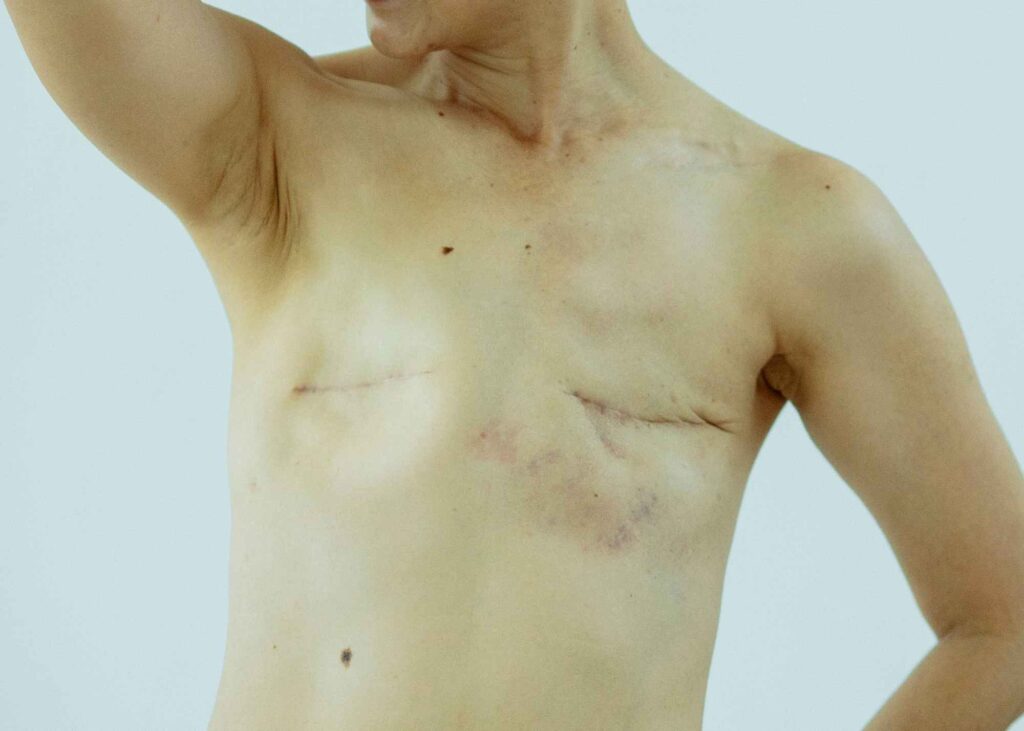
Types of Prophylactic Mastectomy
There are several types of prophylactic mastectomy, each removing different amounts of tissue.
Unilateral Prophylactic Mastectomy
This surgery removes one breast but leaves the other intact. Women typically choose this option when they have a significantly higher risk in one breast, such as a previous cancer diagnosis on the other side. This is also known as a contralateral prophylactic mastectomy.
Bilateral Prophylactic Mastectomy
This procedure removes both breasts. Most women with BRCA mutations choose bilateral surgery because their risk affects both breasts equally.
Simple (Total) Mastectomy
A simple mastectomy removes all breast tissue, the nipple, and the areola, but leaves the chest muscle intact. This is the most common type of prophylactic mastectomy. The surgery preserves the chest wall structure, making reconstruction easier if you choose it.
Nipple-Sparing Mastectomy
This technique removes breast tissue but preserves the nipple and areola. Your surgeon makes an incision along the breast crease or around the areola to access the tissue. Not everyone is a candidate for this surgery, as it often depends on factors like your breast size and nipple position.
Skin-Sparing Mastectomy
This approach removes breast tissue and the nipple but keeps most of the breast skin. The preserved skin envelope makes immediate reconstruction more natural-looking.
Prophylactic Mastectomy and Reconstruction
Many women who choose a prophylactic mastectomy also get breast reconstruction.
You can have reconstruction during the same surgery as your mastectomy (immediate reconstruction) or wait and have it done later (delayed reconstruction).
Your reconstruction options include implants or using your own tissue from another part of your body, like your abdomen or back. A plastic surgeon will discuss which option works best for you.
However, keep in mind that reconstruction is a separate procedure with its own recovery time and potential complications.
What Happens During a Prophylactic Mastectomy?
During the prophylactic mastectomy surgery, you’ll be under general anesthesia. The procedure typically takes 1-3 hours, depending on whether you’re having one or both breasts removed. If you’re having immediate reconstruction, it can take longer.
Your surgeon removes the breast tissue through carefully planned incisions. They’ll then close the incisions with stitches or surgical glue. If you’re having reconstruction, the plastic surgeon will work immediately after the mastectomy is complete.
Prophylactic Mastectomy Recovery
Recovery from prophylactic mastectomy takes time, but with the right support, you can return to your normal activities stronger than before. Most women need 4-6 weeks for initial healing, but the full recovery can take several months.
Working with a physical therapist after a breast cancer surgery can make a big difference in your recovery. Often, we focus more on what happens during the risk-reducing surgery and less on what you need after, but it’s essential to pay attention to these areas:
Physical Therapy and Movement
Physical therapy helps you minimize pain and build up strength after your prophylactic mastectomy. Your PT will guide you through exercises to restore shoulder and arm mobility, which can become limited after surgery. This also helps prevent long-term neck and shoulder issues.
You can get started with these exercises:
Learn more about exercise after a mastectomy.
Scar Tissue Management
Learning how to manage scar tissue is essential for both comfort and appearance. Your physical therapist will teach you massage techniques to keep mastectomy scars soft and flexible. This will help prevent the tissue from becoming thick and tight, which can limit movement and cause discomfort.
Lymphedema Prevention
If your surgery included lymph node removal, you have an increased risk of developing lymphedema, a condition that causes chronic swelling. However, it’s possible to prevent lymphedema with physical therapy exercises. The swelling can also be reversible at the early stages of lymphedema, so knowing the warning signs to watch for is very important.
I cover all of these topics in my physical therapy program, Breast Cancer Rehab.
Prophylactic Mastectomy Pros and Cons
What are the advantages of a preventative mastectomy?
The main advantage of a prophylactic mastectomy is a significant reduction in breast cancer risk. For women with BRCA mutations, this surgery can lower breast cancer risk by 95% or more. For women with strong family histories, the reduction can be up to 90%.
It can also feel like an empowering decision and a way to take control of your health. Some people with risk factors live with a constant worry about developing cancer, so getting a risk-reducing mastectomy helps them feel more at peace.
What are the risks of a prophylactic mastectomy?
Prophylactic mastectomy is a major surgery, and even after getting it, your risk of breast cancer is still not zero. Small amounts of breast tissue remain, and cancer can still develop in this tissue. It’s a much smaller risk, but it’s still there.
In addition to not eliminating your risk of breast cancer, a prophylactic mastectomy comes with several other downsides:
- Surgical complications: Like any major surgery, you risk infection, bleeding, and anesthesia reactions. These complications are usually manageable with proper medical care.
- Body image challenges: Even with reconstruction, your chest will look and feel different. Some women struggle with changes to their sense of femininity and sexual confidence.
- Emotional impact: You may feel grief over losing part of your body, even when confident in your decision. Some women worry they made the wrong choice or feel guilty about their relief.
- Loss of breastfeeding ability: You won’t be able to breastfeed future children. This can be emotionally difficult for women who haven’t completed their families.
- Changes in sensation: Many women experience numbness or altered sensitivity in their chest area. This can affect intimacy and how you experience touch.
Some of these effects, like changes in sensation, may seem minor compared to preventing breast cancer. However, they can significantly impact your daily life and relationships, so they’re important to consider when making your decision.
Also, remember that a prophylactic mastectomy doesn’t affect your risk of other cancers, including ovarian cancer risk, which is also elevated in women with BRCA mutations.
What Age to Have a Prophylactic Mastectomy?
There’s no “right” age for a prophylactic mastectomy. It depends on your individual risk factors and personal circumstances.
For women with BRCA mutations, many doctors suggest considering the surgery between the ages of 25 and 40, or about 5 to 10 years before the earliest breast cancer diagnosis in your family.
Does Insurance Cover Prophylactic Mastectomy?
It depends on your provider and plan. Most insurance companies will cover prophylactic mastectomy when it’s determined medically necessary due to high breast cancer risk.
The federal Women’s Health and Cancer Rights Act requires that if your insurance covers a mastectomy, it must also cover breast reconstruction. However, getting approval often requires documentation from your doctors explaining why the surgery is medically necessary.
Breast Cancer After Prophylactic Mastectomy
Prophylactic mastectomy dramatically reduces your breast cancer risk, but it doesn’t eliminate it completely. Surgeons can’t remove all the breast tissue during the procedure, and cancer can still develop in the remaining tissue.
The risk is very small—less than 5% for women with BRCA mutations— but it exists.
This is why follow-up care remains important even after prophylactic mastectomy. Your doctor will recommend ongoing surveillance appropriate for your individual situation, though it will be much less intensive than before surgery.
Is a Prophylactic Mastectomy Worth It?
Having or not having a prophylactic mastectomy is a deeply personal decision. For women with BRCA mutations or very strong family histories, the surgery can provide a life-changing peace of mind and significant risk reduction. However, it’s a major surgery with permanent effects on your body. Some women prefer increased surveillance with regular imaging and clinical exams instead.
FAQs
How painful is a prophylactic mastectomy?
Prophylactic mastectomy is a major surgery, so you can expect significant pain for the first few days after the procedure. The pain can be moderate to severe initially, but it becomes manageable with prescribed pain medications. This initial pain gradually decreases over the first couple of weeks. During your recovery, physical therapy exercises and scar tissue management can help prevent long-term discomfort.
How long is the recovery from a prophylactic mastectomy?
Recovery from a prophylactic mastectomy typically takes 4-6 weeks for the initial healing. The full recovery and return to normal activity can take a few months. If you have immediate reconstruction, your recovery may take longer. Most women can resume normal activities gradually, starting with light walking within a few days and progressing to more activity as their body heals.
Do they remove lymph nodes with a prophylactic mastectomy?
Usually, lymph nodes are not removed during prophylactic mastectomy because you don’t have cancer that could spread to the lymph nodes. However, in some cases with very high-risk patients or certain medical circumstances, doctors may remove a few sentinel lymph nodes for testing. When lymph nodes are removed, there’s a risk of developing lymphedema, a condition that causes chronic swelling in the arm. However, physical therapy can help you lower this risk.
Can you get breast cancer after a prophylactic mastectomy?
Yes, unfortunately, you can still develop breast cancer after a prophylactic mastectomy, but the risk is very small. The surgery removes most breast tissue, but it’s impossible to remove every single breast cell from your body. Small amounts of tissue remain, and cancer can potentially develop in this remaining tissue. For women with BRCA mutations, the risk drops to less than 5% after bilateral prophylactic mastectomy. While this isn’t zero risk, it’s much lower than it would be without surgery.
What is the difference between a mastectomy and a prophylactic mastectomy?
A regular is a form of breast cancer treatment. It removes breast tissue with existing cancerous cells. A prophylactic mastectomy removes healthy breast tissue to prevent cancer from developing in the first place. Prophylactic mastectomy is performed on women who haven’t been diagnosed with cancer but are at high risk due to genetic factors or family history.
Breast Cancer & Prophylactic Mastectomy Support
One area that’s often overlooked when it comes to a prophylactic mastectomy is the recovery after the surgery. Many women experience problems like reduced arm mobility, tight scar tissue, and swelling, and it can be hard to find support and education on these topics.
As a physical therapist and a board-certified oncology clinical specialist, I created an online program called Breast Cancer Rehab to help you minimize pain and build up strength after surgery from the comfort of your home.
Inside the program, you’ll find help with:
- Arm mobility after surgery
- Scar tissue
- Breast swelling
- Breast cancer-related arm lymphedema
- Axillary web syndrome/cording
Learn more about Breast Cancer Rehab and join!




